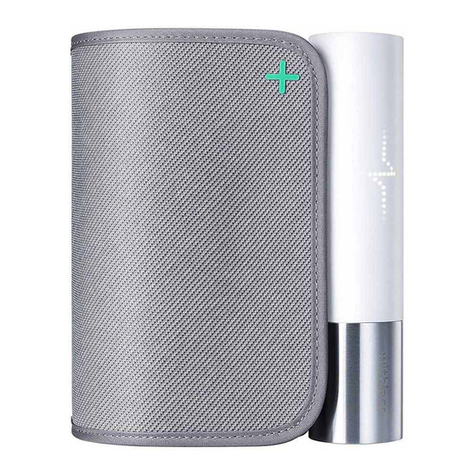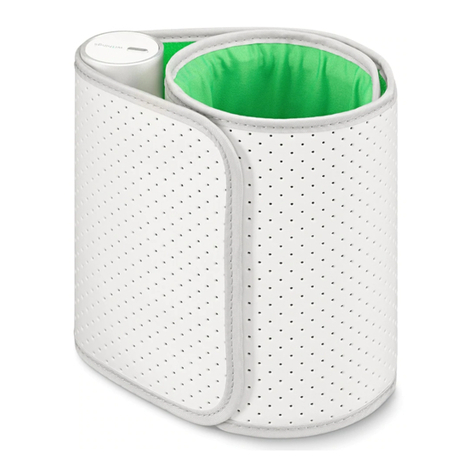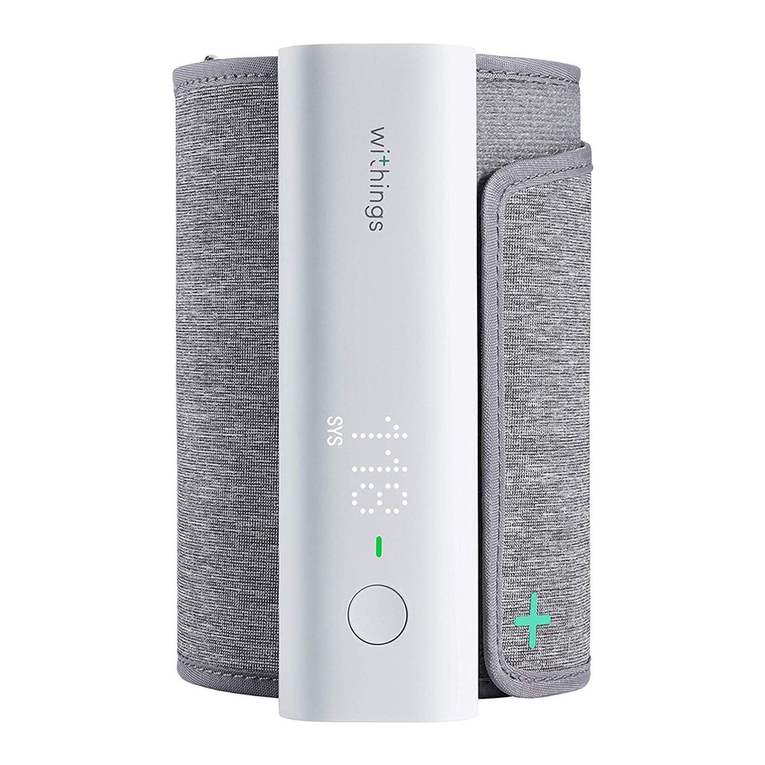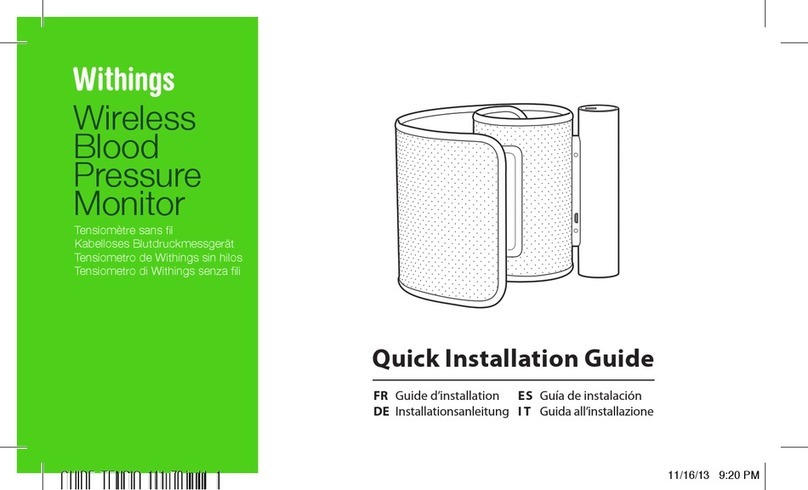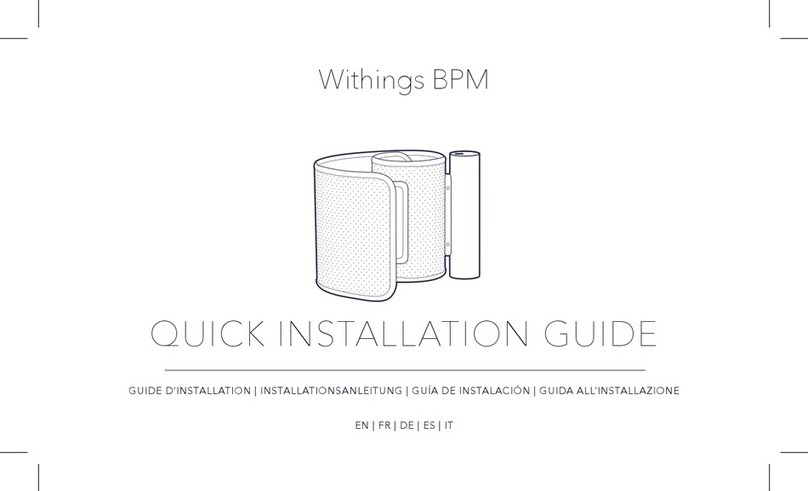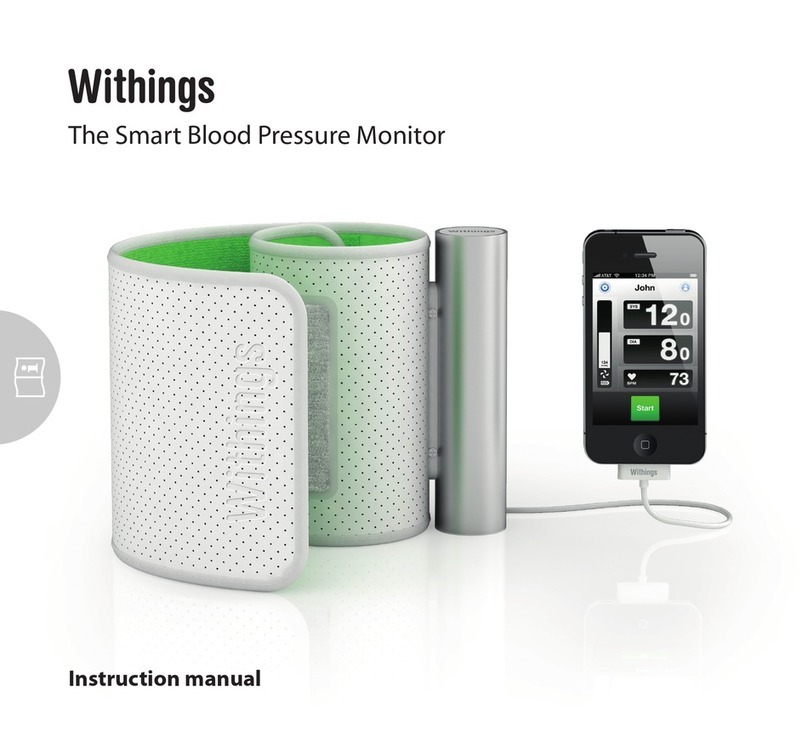
3
EN
FR
DE
SV
NL
FI
DA
IT
ES
CS
PL
PT
RO
HU
SK
ET
EL
IS
LV
LT
SL
TR
BG
HR
Warnings and safety notices
- Do not forcibly bend the arm cu.
- Do not inflate the arm cu when it is not wrapped around your arm.
- Do not apply strong shocks and vibrations to the blood pressure
monitor or drop it.
- Do not take a measurement after bathing, drinking alcohol,
smoking, exercising or eating.
- Do not immerse the arm cu in water.
- Do not use with a pacemaker, a defibrillator or other electric
implant.
- Use on adults only.
- Do not use it on children or pets.
Consult your doctor during pregnancy, or if you suer from
arrhythmia and arteriosclerosis. Please read this section carefully
before using this smart blood pressure monitor with ECG & digital
stethoscope.
Always consult your doctor. Self-diagnosis of measurement results
and self treatment are dangerous. People with severe blood flow
problems or blood disorders should consult a doctor before
using the blood pressure monitor. Cu inflation can cause internal
bleeding. Operational factors such as common arrhythmias, ven-
tricular premature beats, arteriosclerosis, poor perfusion, diabetes,
age, pregnancy, pre-eclampsia or renal disease can aect the
performance of the automated sphygmomanometer and/or its
blood pressure reading. This is a precision measuring device that
may be understood by lay users, but should still be handled with
care. Exposing the device to prolonged lint, dust or sunlight might
reduce its life or damage it. A damaged cu or sensor may lead
to incorrect measurements. The USB port should only be used for
charging the device. Parts in contact with the skin: cu and elec-
trodes. Measurements can be aected by extreme temperatures,
humidity & altitude.
- Do not leave the blood pressure monitor unattended with infants.
Strangulation may occur.
- Do not use the blood pressure monitor for any purpose other
than measuring blood pressure, recording an ECG and recording
heart sounds.
- Do not disassemble the blood pressure monitor.
- Do not operate the blood pressure monitor in a moving vehicle
(car, airplane).
- Do not use the device with the USB cable plugged in.
- Do not shake the unit violently.
- Improper continuous pressure of cu or too-frequent measure-
ments may interfere with blood flow and result in injury to the
user. Check to ensure that the use of the device does not result in
prolonged impairment of your blood circulation.
- Do not apply the cu over the user’s arm if it has a wound or
medical treatment, as this can cause further injury.
- Consult your physician before using this monitor if you have had
a mastectomy.

